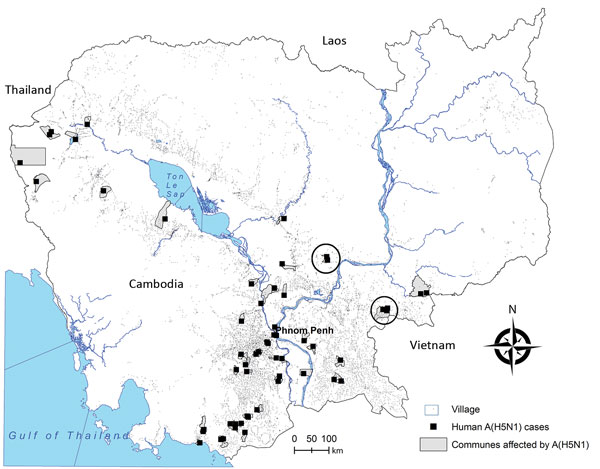Volume 23, Number 2—February 2017
Dispatch
Seroprevalence and Transmission of Human Influenza A(H5N1) Virus before and after Virus Reassortment, Cambodia, 2006–2014
Figure

Figure. Geographic distribution of identified human cases in influenza A(H5N1)–affected villages, Cambodia, 2006–2014, Institut Pasteur du Cambodge, 2005–2014 (circles indicate areas investigated in 2014). Village distribution reflects population density. “Commune affected by A(H5N1)” refers to Cambodian communes in which A(H5N1) virus infection was laboratory-confirmed among humans or poultry.
Page created: January 17, 2017
Page updated: January 17, 2017
Page reviewed: January 17, 2017
The conclusions, findings, and opinions expressed by authors contributing to this journal do not necessarily reflect the official position of the U.S. Department of Health and Human Services, the Public Health Service, the Centers for Disease Control and Prevention, or the authors' affiliated institutions. Use of trade names is for identification only and does not imply endorsement by any of the groups named above.